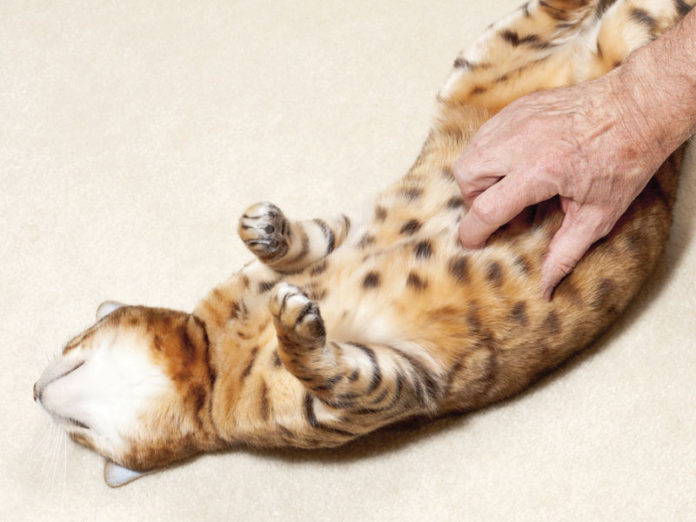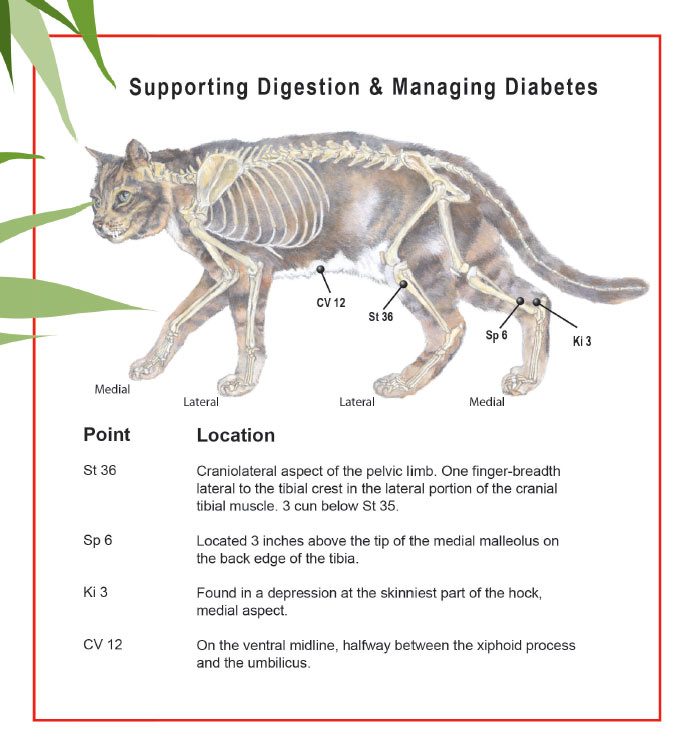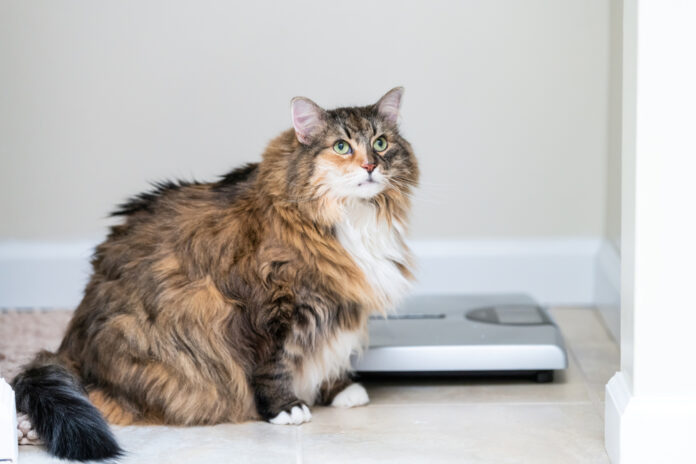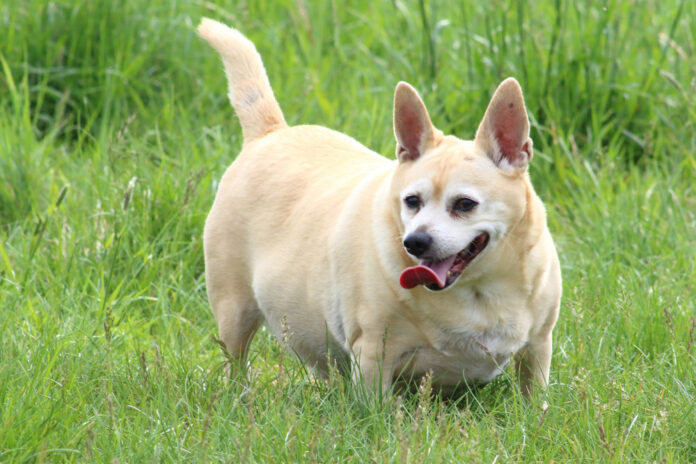Feline diabetes

How diet and acupressure can help manage feline diabetes by supporting his digestion.
Has your cat been diagnosed with diabetes? Don’t panic. Feline diabetes is more common than you think, but the good news is that it’s manageable. You may be wondering why your cat developed this disease. After all, he doesn’t snack on candy. But when he eats foods composed of proteins, carbohydrates and fats, he must break these ingredients down into absorbable nutrients to fuel his body.
One of the fuels produced during this process is glucose, which is a form of sugar. The fl ow of glucose from the cat’s blood into his cells is controlled by the hormone, insulin. In a diabetic cat, the body isn’t able to either create or properly utilize insulin. Without insulin to regulate the fl ow of glucose, the cat’s blood sugar levels can elevate to dangerous and even life-threatening levels.
There are two types of feline diabetes – non-insulin-dependent diabetes mellitus (NIDDM) and insulin-dependent diabetes mellitus (IDDM). Diet is usually the key to controlling glucose levels in non-insulin-dependent diabetes, while additional insulin is given to regulate blood sugar in insulin-dependent diabetes. If diabetes isn’t managed properly, a cat can develop a severe and often fatal condition called “ketoacidosis”, which requires immediate veterinary intervention.
Symptoms and diagnosis
Generally, diabetes tends to occur in obese, middle-aged or older cats. There’s also a correlation between diabetes and low quality pet foods high in carbohydrates. As diabetes progresses, cats may become overly thirsty and ravenously hungry because they’re not receiving the proper nutrients to fuel their bodies.
The most obvious indicators of diabetes include an increase in appetite, weight loss, and excessive drinking and urination. If you have even a mild suspicion your cat is heading in this direction, it’s wise to take him to an integrative or holistic veterinarian for blood and urine tests.
Once a cat has been diagnosed with diabetes, and its level of severity has been determined, integrative management options need to be implemented. First, follow your vet’s recommendations. Second, seek a professional trained in natural feline nutrition. Third, support your cat’s digestive system by offering him acupressure sessions.
Dietary influences
Our small domesticated cats have the exact same digestive systems their wild ancestors had. Cats were domesticated about 9,000 years ago, but their insides haven’t changed at all. Felines are “protein obligates”, which means their diet must be high in meat. The ancient Egyptians were responsible for domesticating small cats because they were ideal for ridding grain stores of pesky rodents. Cats thrived on mice and the small quantities of plant matter in the rodents’ stomachs. This is the modern cat’s ancestral diet – high protein and minimal grain or plant matter.
In the 20th century, for our own convenience, we began feeding our cats processed, manufactured, mass-marketed foods containing large quantities of low quality cereals. These carbohydrates turn to glucose in the cat’s body, leading to high blood sugar levels that his natural excretion of insulin can’t cope with. The cat’s entire digestive system becomes imbalanced, his cells’ ability to absorb nutrients becomes compromised, and his blood sugar levels go way up. The cat appears to be starving, because he is starving internally.
To help prevent diabetes, or to stabilize a diabetic cat’s natural insulin production, feline nutritionists suggest a raw frozen or home-cooked meat-based grain-free diet. At the very least, avoid low end commercial cat foods, especially dry kibble, and opt for high quality premium diets with whole named meats as the first ingredients.

Acupressure to support digestion and manage diabetes
The health and well-being of your cat depends heavily on how well his digestive system processes nutrients. Specific acupressure points are known to enhance digestion by refining food substances into bio-available nutrients. Offering your cat a brief acupressure session every three to four days can help balance his digestive system so his blood sugar levels are within normal range, and improve his ability to absorb nutrients properly.
The acupoints presented in the accompanying chart have, through thousands of years of clinical observation by Chinese medicine practitioners, proven to be effective in managing and even resolving diabetes. Simply place your pointer finger on each acupoint illustrated in the diagram, and slowly count to 30 before moving on to the next point. Repeat this procedure on the opposite side of your cat.
Holistic or integrative veterinary care, careful attention to your cat’s diet, and regular acupressure sessions can take the scariness out of your kitty’s diagnosis, and help him live a long and healthy life.




